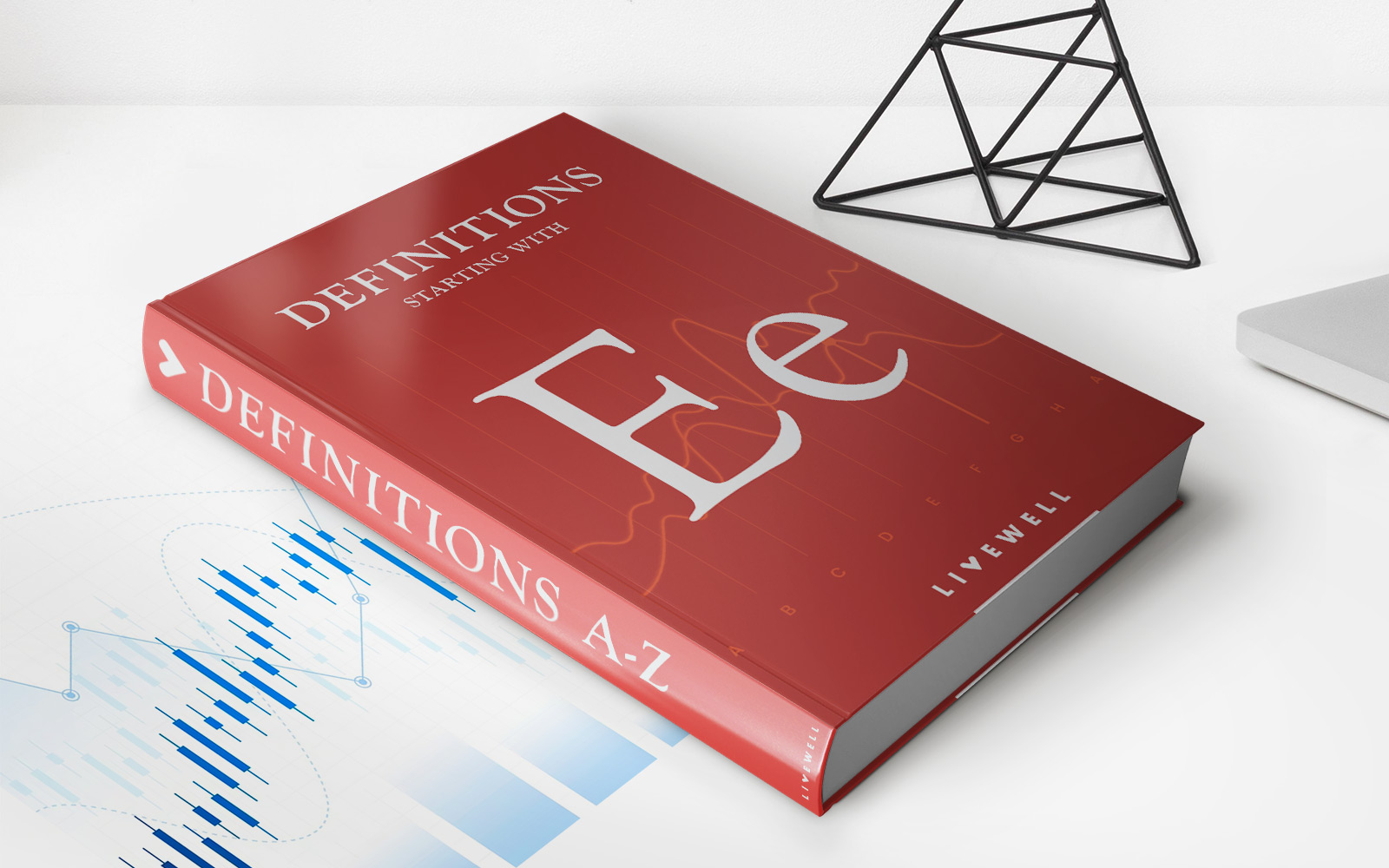Home>Finance>Why Is An Applicant’s Signature Required On A Life Insurance Application?


Finance
Why Is An Applicant’s Signature Required On A Life Insurance Application?
Published: November 28, 2023
Learn why a signature is necessary on a life insurance application! Understand the financial implications and importance of applicant signature in the insurance process.
(Many of the links in this article redirect to a specific reviewed product. Your purchase of these products through affiliate links helps to generate commission for LiveWell, at no extra cost. Learn more)
Table of Contents
- Why Is An Applicant’s Signature Required On A Life Insurance Application?
- Introduction
- The Purpose of a Signature on a Life Insurance Application
- Legal Requirements for an Applicant’s Signature
- Verification of the Applicant’s Identity
- Acknowledgment of Policy Terms and Conditions
- Confirmation of Accurate and Complete Information
- Waiver of Rights and Consent
- Signature as Binding Agreement
- Conclusion
Why Is An Applicant’s Signature Required On A Life Insurance Application?
When applying for a life insurance policy, one of the key requirements is that the applicant’s signature is obtained on the application form. This signature serves a crucial purpose in the application process, signifying the applicant’s consent, agreement, and understanding of the terms and conditions of the policy. Let’s explore why the applicant’s signature is essential in a life insurance application.
1. Legal Requirements: The first and foremost reason for requiring an applicant’s signature is to meet legal standards and regulations governing the insurance industry. In many jurisdictions, a signed application form is legally binding, ensuring that both the applicant and the insurance company are held accountable for the information provided.
2. Verification of Identity: By signing the application, the applicant confirms their identity and establishes that they are the authorized person applying for the policy. This helps prevent identity theft and ensures that the applicant is legally eligible to seek insurance coverage.
3. Acknowledgment of Policy Terms and Conditions: The signature on the application demonstrates that the applicant has read and understood the terms and conditions of the life insurance policy. It serves as evidence that they are aware of the coverage details, premium payments, exclusions, and any other essential provisions outlined in the policy documents.
4. Confirmation of Accurate and Complete Information: By signing the application, the applicant affirms that all the information provided is accurate, complete, and honestly represents their personal and medical history. This helps the insurance company assess the risk accurately and determine the appropriate premium for the policy.
5. Waiver of Rights and Consent: The applicant’s signature acknowledges that they understand and accept any waivers or exclusions specified in the policy. For example, the insurance company may exclude coverage for certain pre-existing conditions or risky activities. The signature proves that the applicant is aware of these limitations and agrees to them.
6. Signature as Binding Agreement: In legal terms, the applicant’s signature on the life insurance application is a manifestation of their intent to be bound by the terms of the policy. It signifies their willingness to enter into a contractual agreement with the insurance company, where both parties have certain rights and obligations.
Overall, the applicant’s signature on a life insurance application is a critical element that ensures compliance with legal regulations, establishes consent and understanding of policy terms, confirms the accuracy of information provided, and signifies the applicant’s agreement to be bound by the terms and conditions of the insurance contract. By obtaining the applicant’s signature, the insurance company can protect itself and provide efficient and reliable coverage to policyholders.
Introduction
Life insurance is a valuable financial tool that provides financial protection for individuals and their loved ones. When applying for a life insurance policy, there are several requirements that need to be fulfilled, one of which is obtaining the applicant’s signature on the application form. This seemingly simple act holds significant importance and serves various purposes in the life insurance application process.
In this article, we will delve into the reasons why an applicant’s signature is required on a life insurance application. Understanding the significance of this requirement can help applicants grasp the legal and contractual aspects of the policy, ensuring a smooth and transparent process when seeking life insurance coverage.
We will explore the legal obligations associated with an applicant’s signature, the verification of the applicant’s identity, the acknowledgment of policy terms and conditions, the confirmation of accurate information, the waiver of rights and consent, and the binding nature of the applicant’s signature. By examining these aspects, we can gain a comprehensive understanding of why an applicant’s signature is an essential component of a life insurance application.
Life insurance provides financial security and peace of mind for individuals and their families. By obtaining an applicant’s signature on the application form, insurance companies can ensure that the applicant fully understands and agrees to the terms and conditions of the policy. This helps create a mutual understanding and a binding agreement between the policyholder and the insurance company.
Whether you are considering applying for life insurance or simply interested in understanding the intricacies of the application process, this article will shed light on the significance of the applicant’s signature. So, let’s move forward and explore why an applicant’s signature is a crucial requirement on a life insurance application.
The Purpose of a Signature on a Life Insurance Application
The signature on a life insurance application serves multiple purposes, each playing a crucial role in the insurance application process. Let’s explore the various reasons why an applicant’s signature is required and its significance in obtaining life insurance coverage.
1. Legal Requirements: One of the primary purposes of requiring an applicant’s signature is to fulfill legal obligations. In many jurisdictions, a signed application form is considered a legally binding document. The signature represents the applicant’s consent, understanding, and agreement to the terms and conditions of the life insurance policy. It serves as evidence of the applicant’s intent to enter into a contractual relationship with the insurance company.
2. Verification of Identity: The signature on the application form serves as proof of the applicant’s identity. By signing the form, the applicant confirms that they are the authorized person applying for the life insurance policy. This helps prevent identity theft and ensures that the insurance coverage is granted to the correct individual.
3. Acknowledgment of Policy Terms and Conditions: The applicant’s signature signifies their acknowledgment and acceptance of the terms and conditions set forth in the life insurance policy. It demonstrates that the applicant has reviewed and understood the coverage details, premium payments, exclusions, and any other important provisions outlined in the policy documents.
4. Confirmation of Accurate and Complete Information: When signing the life insurance application, the applicant affirms that all the information provided is accurate and complete to the best of their knowledge. This includes personal details, medical history, and any other relevant information necessary for the insurance company to assess the risk accurately. The signature acts as a declaration of truthfulness and minimizes the chances of fraudulent or misleading information being provided.
5. Waiver of Rights and Consent: By signing the application form, the applicant indicates their understanding and agreement to any waivers or exclusions specified in the policy. This can include coverage limitations for specific pre-existing conditions or certain high-risk activities. The signature demonstrates that the applicant is aware of these limitations and consents to them.
6. Signature as Binding Agreement: The applicant’s signature on the life insurance application forms a binding agreement between the policyholder and the insurance company. It signifies the commitment of both parties to fulfill their obligations under the terms of the policy. This includes the payment of premiums by the policyholder and the provision of insurance coverage by the insurance company.
Overall, the signature on a life insurance application holds significant importance in ensuring legal compliance, verifying the applicant’s identity, acknowledging policy terms and conditions, confirming accurate information, obtaining consent to policy limitations, and creating a binding agreement between the policyholder and the insurance company. By understanding the purpose of an applicant’s signature, individuals can approach the life insurance application process with clarity and confidence.
Legal Requirements for an Applicant’s Signature
Obtaining the applicant’s signature on a life insurance application is not just a formality; it is a legal requirement that serves to protect both the applicant and the insurance company. Let’s explore the legal aspects and requirements associated with an applicant’s signature in the context of a life insurance application.
1. Contractual Agreement: When an applicant signs a life insurance application, it signifies their intent to enter into a contractual agreement with the insurance company. This agreement outlines the rights, responsibilities, and obligations of both parties. By signing the application, the applicant confirms their understanding and consent to the terms and conditions specified in the policy.
2. Validity and Enforceability: In order for a life insurance policy to be valid and enforceable, the application form must be signed by the applicant. This is because the signature acts as proof that the applicant has willingly agreed to the terms and conditions of the policy. Without a valid signature, the insurance contract may be deemed incomplete or invalid.
3. Adherence to Regulatory Standards: Various regulatory bodies govern the insurance industry, and these bodies have established rules and standards that insurance companies must comply with. Requiring an applicant’s signature is often a regulatory requirement to ensure that the insurance company is following the necessary procedures and obtaining the appropriate consent from individuals seeking insurance coverage.
4. Providing Legal Protection: A signed application form provides legal protection to both the applicant and the insurance company. It ensures that the applicant acknowledges and accepts the terms and conditions of the policy, including any exclusions or limitations. In the event of any dispute or misunderstanding, the signed application serves as evidence of the applicant’s intentions and helps prevent fraudulent claims or misrepresentation.
5. Minimizing Misrepresentation: Requiring an applicant’s signature helps minimize the risk of misrepresentation or false information provided in the application. The signature signifies that the applicant has provided accurate and complete information to the best of their knowledge. This is important for the insurance company to assess the risk properly and offer appropriate coverage and premium rates.
6. Proof of Identity: Along with the required personal information, the applicant’s signature on the application form serves as proof of their identity. This helps verify that the person seeking insurance coverage is indeed the authorized applicant and protects against identity theft or fraudulent applications.
It is important to note that the legal requirements for an applicant’s signature may vary depending on the jurisdiction and specific insurance regulations in place. Therefore, it is crucial for insurance companies and applicants to adhere to the specific legal requirements of the applicable jurisdiction to ensure compliance and the validity of the insurance contract.
By fulfilling the legal requirements for an applicant’s signature, both the insurance company and the applicant can have confidence in the validity and enforceability of the life insurance policy. It provides legal protection, ensures adherence to regulatory standards, and helps maintain the integrity and trustworthiness of the insurance industry.
Verification of the Applicant’s Identity
One of the crucial reasons for requiring an applicant’s signature on a life insurance application is to verify the applicant’s identity. Identity verification is a vital step in the insurance application process to ensure that the policy is issued to the correct person and to prevent fraud or unauthorized access to insurance coverage. Let’s explore the importance of verifying the applicant’s identity and how the signature plays a role in this process.
Confirmation of Identity: The applicant’s signature serves as a confirmation that they are who they claim to be. By signing the application form, the individual affirms their identity and asserts that they are the authorized person applying for the life insurance policy. This is particularly important in preventing identity theft, where someone could potentially apply for a policy using another person’s information.
Prevention of Fraudulent Applications: Verifying the applicant’s identity helps insurance companies prevent fraudulent applications. By confirming the applicant’s signature against their identification documents, the insurance company can ensure that the application is genuine and that the applicant is not misrepresenting themselves. This step adds another layer of security to protect the interests of both the insurance company and legitimate policyholders.
Compliance with Regulatory Requirements: Identity verification is often a regulatory requirement for insurance companies. Regulators aim to minimize the risk of money laundering, terrorist financing, and other fraudulent activities. Obtaining the applicant’s signature and validating their identity is part of the due diligence process that helps insurance companies fulfill their compliance obligations while protecting the integrity of the insurance industry.
Protection Against Unauthorized Access: Verifying the applicant’s identity through their signature helps ensure that insurance coverage is granted only to authorized individuals. It prevents someone from applying for a policy on behalf of someone else without their knowledge or consent. This safeguard is essential in maintaining the trust and integrity of the insurance industry, as it ensures that policies are issued to the intended individuals.
Acknowledgment of Responsibility: The act of signing the application form indicates that the applicant understands and takes responsibility for the information provided. By verifying their identity through their signature, the applicant acknowledges that they are responsible for the accuracy and truthfulness of the details provided in the application, including personal information, medical history, and any other relevant data. This promotes transparency and honesty throughout the application process.
Protection of Personal Information: Verifying the applicant’s identity helps safeguard their personal information. By ensuring that the policy is issued to the correct individual, insurance companies can protect the applicant’s sensitive data from falling into the wrong hands. This is particularly important in an era where data breaches and identity theft are prevalent concerns.
In summary, the verification of the applicant’s identity is a crucial step in the life insurance application process. The applicant’s signature plays a significant role in this verification, helping to confirm their identity, prevent fraudulent activities, comply with regulatory requirements, protect against unauthorized access, acknowledge responsibility, and safeguard personal information. By ensuring the accuracy and integrity of the applicant’s identity, insurance companies can provide reliable coverage to legitimate policyholders and protect the interests of all parties involved.
Acknowledgment of Policy Terms and Conditions
When an applicant signs a life insurance application, they are acknowledging and accepting the terms and conditions of the policy. This step is essential to ensure that the applicant fully understands the coverage details and any limitations or exclusions that may apply. Let’s explore the significance of acknowledging the policy terms and conditions through the applicant’s signature and how it impacts the life insurance application process.
Understanding Coverage Details: The applicant’s signature signifies their acknowledgment that they have read and understood the coverage details outlined in the policy. This includes information about the type of policy, the coverage amount, the premium payments, and any additional benefits provided. By signing the application, the applicant demonstrates their comprehension of the specific terms and conditions associated with the policy.
Acceptance of Limitations and Exclusions: Life insurance policies often come with certain limitations and exclusions. These can include waiting periods for specific conditions, coverage restrictions for high-risk activities, or exclusions for certain pre-existing medical conditions. The applicant’s signature indicates their acceptance and understanding of these limitations and exclusions. It is crucial for applicants to review the policy documents carefully and seek clarification from the insurance company if needed before signing.
Consent to Beneficiary Designations: The applicant’s signature may also signify their consent to designate beneficiaries for the life insurance policy. Beneficiaries are the individuals or entities who will receive the death benefit upon the policyholder’s passing. By signing the application, the applicant confirms that they have chosen and allocated the death benefit as per their wishes.
Compliance with Policy Requirements: Policies often come with specific requirements that policyholders must adhere to in order to maintain coverage. This can include timely premium payments, periodic medical examinations, or notifying the insurance company of any material changes in the applicant’s health or lifestyle. By signing the application, the applicant agrees to comply with these requirements as stated in the policy.
Consent to Personal Information Usage: Insurance companies require personal information from applicants to assess risk and provide accurate coverage. The applicant’s signature acknowledges their consent for the insurance company to use and process their personal information as required for underwriting and policy administration purposes. This ensures compliance with privacy regulations and establishes a mutual understanding of data usage between the applicant and the insurance company.
Legal Implications: The applicant’s signature on the life insurance application has legal implications. It signifies their agreement to be bound by the terms and conditions outlined in the policy. In case of any disputes or claims, the signed application serves as evidence of the applicant’s acknowledgment and acceptance of these terms.
It is crucial for applicants to thoroughly review the policy terms and conditions before signing the application. If there are any questions or concerns, the applicant should seek clarification from the insurance company or consult with a qualified insurance professional. By understanding and acknowledging the policy terms and conditions through their signature, applicants can ensure they are making informed decisions about their life insurance coverage.
Confirmation of Accurate and Complete Information
When an applicant signs a life insurance application, they are confirming that the information provided is accurate and complete to the best of their knowledge. This step is essential for insurance companies to assess the risk accurately and determine the appropriate premium for the policy. Let’s explore the significance of confirming accurate and complete information through the applicant’s signature and how it impacts the life insurance application process.
Minimizing Risk: By signing the application, the applicant is acknowledging their responsibility to provide accurate and truthful information. This is crucial for the insurance company to assess the risk associated with offering coverage to the applicant. The accuracy of information helps insurance companies make informed decisions about premium pricing and policy acceptance.
Mitigating Fraud: Confirming accurate and complete information through the applicant’s signature helps prevent fraud in the life insurance application process. It demonstrates the applicant’s commitment to providing authentic information and reduces the likelihood of intentional misrepresentation or omission of relevant details that could potentially impact the insurance company’s assessment of risk.
Improved Underwriting Process: Accurate and complete information allows insurance companies to conduct a thorough underwriting process. This involves evaluating the applicant’s health history, medical conditions, lifestyle factors, and other relevant data to determine the risk associated with providing coverage. The applicant’s signature confirms that they have provided all necessary information for this assessment.
Policy Customization: The accuracy and completeness of information assist insurance companies in customizing policies to suit the individual applicant’s needs. By verifying information through the applicant’s signature, insurers can tailor coverage based on the provided details, ensuring that the policy aligns with the applicant’s circumstances and requirements.
Claim Validity: Accurate and complete information is crucial in determining the validity of a life insurance claim. When an applicant signs the application, they are confirming that the information provided is true and complete. If inaccurate or incomplete information is discovered later during the claim process, it can lead to complications, delays, or even denial of the claim.
Legal Responsibility: By signing the application, the applicant assumes legal responsibility for the accuracy and completeness of the information provided. This helps protect the interests of both the applicant and the insurance company, as it establishes a foundation of trust and adherence to the terms of the insurance contract.
It is imperative for applicants to carefully review their application before signing and ensure that all information is accurate, complete, and up to date. If there are any uncertainties or changes in circumstances, it is important to communicate them to the insurance company promptly. By confirming accurate and complete information through their signature, applicants can provide insurers with the necessary data to make informed decisions and facilitate a smooth life insurance application process.
Waiver of Rights and Consent
When an applicant signs a life insurance application, they are waiving certain rights and providing their consent to various aspects of the policy. This step is important to establish mutual understanding and agreement between the applicant and the insurance company. Let’s explore the significance of waiving rights and providing consent through the applicant’s signature and how it impacts the life insurance application process.
Understanding Policy Limitations: The applicant’s signature acknowledges their understanding of any limitations or restrictions specified in the policy. This can include exclusions for pre-existing medical conditions, waiting periods, or coverage limitations for certain high-risk activities. By signing the application, the applicant waives their rights to coverage in these specific circumstances, demonstrating their consent and acceptance of these terms.
Consent for Data Use: Insurance companies collect and process personal information to assess risk and administer policies. When the applicant signs the application, they are providing their consent for the insurance company to use their personal information for underwriting, policy administration, and claims processing purposes. This ensures compliance with privacy regulations and establishes a clear understanding of data usage between the applicant and the insurance company.
Consent for Medical Information: Life insurance applications often require disclosure of the applicant’s medical history and may include the collection of medical records or results from medical examinations. The applicant’s signature indicates their consent for the insurance company to obtain and review relevant medical information. This consent is crucial in determining the applicant’s insurability and assessing the appropriate premium rates for the policy.
Consent for Policy Assignments: The applicant’s signature may also signify their consent for the assignment or transfer of the policy. This allows the policyholder to transfer ownership or assign the policy to another individual or entity, with the consent of the insurance company. The signature demonstrates the applicant’s agreement to this potential future arrangement.
Consent for Electronic Communication: With the increasing digitalization of the insurance industry, policyholders often have the option to receive policy documents and communication electronically. By signing the application, the applicant provides their consent for electronic communication, waiving their rights to receive physical copies of documents unless requested specifically.
Consent for Beneficiary Designations: The applicant’s signature confirms their consent and agreement regarding beneficiary designations. Beneficiaries are the individuals or entities entitled to receive the death benefit upon the policyholder’s passing. By signing the application, the applicant acknowledges their consent to the specified beneficiary designations and any potential changes made within the terms of the policy.
The signature on a life insurance application represents the applicant’s willingness to waive certain rights and provide consent to various aspects of the policy. This step is crucial for establishing clear expectations, ensuring compliance with privacy regulations, allowing for efficient policy administration, and creating a mutual understanding between the applicant and the insurance company.
Applicants should carefully read and understand the terms of the policy before signing, seeking clarification from the insurance company or a qualified professional if needed. By providing consent and waiving specific rights through their signature, applicants can move forward with confidence, knowing they have made informed decisions and are actively participating in the life insurance application process.
Signature as Binding Agreement
When an applicant signs a life insurance application, their signature serves as a binding agreement between themselves and the insurance company. This agreement outlines the rights, responsibilities, and obligations of both parties. Let’s explore the significance of the applicant’s signature as a binding agreement and how it impacts the life insurance application process.
Consent and Acceptance: The applicant’s signature signifies their consent and acceptance of the terms and conditions outlined in the life insurance policy. By signing the application, the applicant agrees to be bound by the provisions and requirements specified in the policy, including premium payments, coverage limitations, and claims processing procedures.
Obligations of the Insurance Company: The insurance company also acknowledges their obligations under the policy through the contractual agreement established by the applicant’s signature. They commit to providing the agreed-upon coverage and benefits in exchange for the applicant’s premium payments and compliance with the policy provisions.
Legal Implications: The signed application carries legal implications as a binding agreement. In case of any disputes or claims, the signature serves as evidence of the applicant’s acknowledgment and acceptance of the policy’s terms and conditions. Both the applicant and the insurance company are legally bound to fulfill their respective obligations under the agreement.
Rights and Responsibilities: The signature on the life insurance application outlines the rights and responsibilities of both parties. The applicant has the right to the agreed-upon coverage and benefits, while the insurance company has the responsibility to administer and provide the coverage as specified in the policy. The agreement ensures that both parties are aware of their rights and obligations under the contract.
Modification and Cancellation: The binding agreement can also address the procedures for modifying or canceling the policy. It outlines the conditions under which changes can be made to the coverage, such as increasing or decreasing the coverage amount or adding riders to the policy. It also specifies the process for cancelling the policy, if necessary. Any modifications or cancellations typically require both parties’ consent, as stated in the agreement.
Continued Validity: The binding agreement remains in effect throughout the duration of the life insurance policy, as long as the premium payments are made and the policy remains in force. The signature represents an ongoing commitment to the terms and conditions of the policy, outlining the obligations of both parties until the policy is terminated or a claim is made.
The applicant’s signature serves as a powerful indication of their intent to be bound by the terms of the life insurance policy. It establishes a contractual relationship, setting forth the rights, responsibilities, and obligations of both the applicant and the insurance company. The binding agreement provides clarity and certainty for both parties and ensures that the terms of the policy are followed throughout its duration.
It is important for applicants to carefully review the policy terms and conditions before signing the application, seeking clarification from the insurance company or a qualified professional if needed. By understanding and acknowledging the signature as a binding agreement, applicants can approach the life insurance application process with confidence, knowing that their commitment and rights are protected by the established contractual relationship.
Conclusion
The requirement for an applicant’s signature on a life insurance application holds significant importance in the insurance industry. It serves multiple purposes and carries legal and contractual implications for both the applicant and the insurance company. Throughout this article, we have explored why the applicant’s signature is required and its significance in the life insurance application process.
The applicant’s signature fulfills legal requirements, ensuring that both parties are bound by the terms and conditions of the policy. It serves as proof of the applicant’s identity and confirms their consent to the policy terms. By signing the application, the applicant acknowledges the accuracy and completeness of the information provided, minimizing the risk of fraud or misleading details. Waiving certain rights and providing consent through the signature establishes clear expectations and protects the interests of all parties involved.
The signature on a life insurance application is also a binding agreement, outlining the rights, responsibilities, and obligations of both the applicant and the insurance company. It carries legal implications and establishes a foundation of trust between the policyholder and the insurer. The agreement remains in effect throughout the policy term, subject to the agreed-upon terms and conditions.
In conclusion, the applicant’s signature on a life insurance application is a crucial requirement to ensure compliance with legal standards, verify the applicant’s identity, acknowledge policy terms and conditions, confirm accurate information, provide consent, and establish a binding agreement. By understanding the significance of the applicant’s signature, individuals can navigate the life insurance application process with confidence, knowing they have actively participated in establishing the terms of their coverage.
Whether you are considering obtaining life insurance or simply interested in understanding the intricacies of the application process, it is essential to recognize the importance of the applicant’s signature. By fulfilling this requirement, both the applicant and the insurance company can proceed with trust and clarity, enhancing the reliability and integrity of the life insurance industry as a whole.














